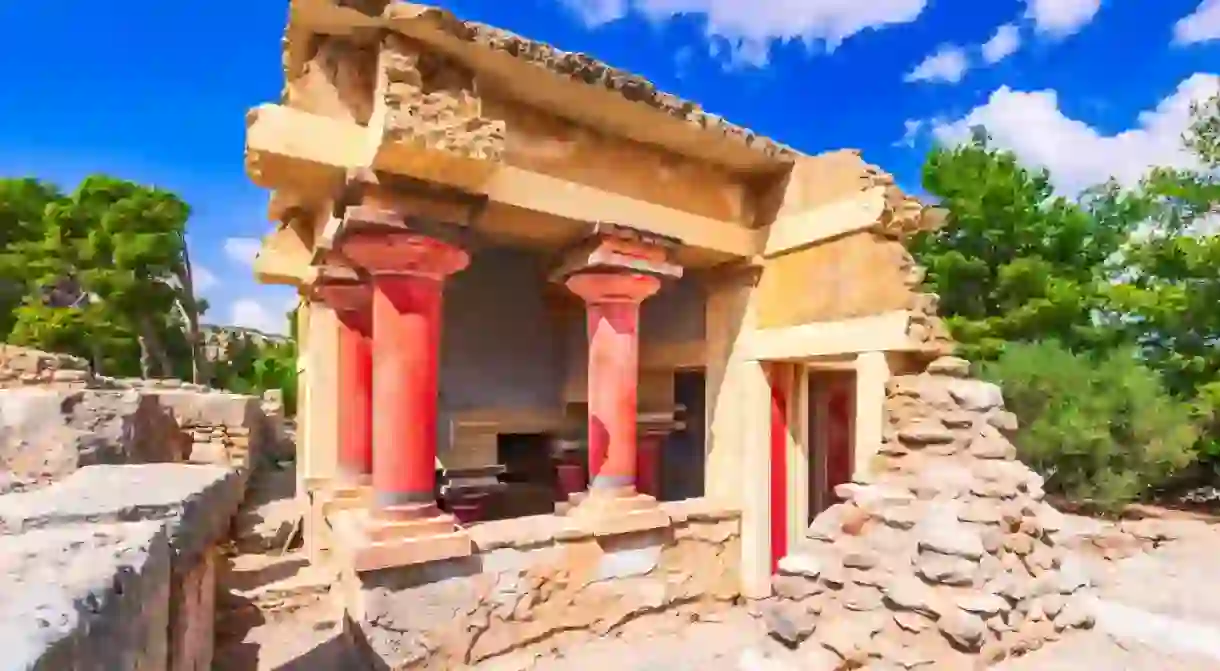Greek Mythological Sites You Can Still Visit Today

Dipped in ancient history, Greece is also a dream destination for anyone interested in mythology. Here is a selection of real locations you can still visit today that were once the center stage of many famous Greek myths. Let us take a journey into the distant past and make a point of visiting some of them.
Must Visit Trips and Tours to Greece
Architectural Landmark

Take advantage of our carefully curated experiences and explore Greece’s rich mythology. Discover the holy island of Delos, where Apollo and Artemis are said to have been born. Explore the interior of Mount Parnassus’s Corycian Cave, a haven for Pan and the nymphs. Explore the intricate ruins of Knossos in Crete, which are associated with the Minotaur story. We’ve got a selection of trips to all corners of the country which you can use to brush up on your ancient knowledge or just relax in stunning destinations.
Delos
Natural Feature

The sacred island of Delos is an unmissable destination for anyone with a keen interest in Greek mythology. Its great mythological importance derives from it being said to be the birthplace of the twin gods Artemis and Apollo. Indeed, mythology has it that it was here that Leto, Zeus’ lover, fled to escape Hera’s wrath and give birth to her children. As a result, sanctuaries and temples were built on the 3km (1.87 mi.) island, and people from around Greece used to come and worship the deities.
Mount Ida (or Psiloritis)
Natural Feature

The Labyrinth of the Minotaur
Historical Landmark
Undeniably, one of the most fascinating ancient Greek myths is the story of Theseus and the Minotaur. To put it in context, you must know about Minos, Zeus’ son and king of Crete. The stories are diverse, but it seems King Minos was forced to raise a son who had the body of a man and the face of a bull. While he managed to trap it inside a labyrinth, he took the habit every year of sending young men and girls into the maze to be devoured by the monster. Theseus, prince of Athens, volunteered one year, and with the help of Ariadne, King Minos’ daughter, he succeeded in killing the beast and finding his way out of the maze. While the exact location of the labyrinth is unsure, there are two places you can visit. The first one is in Kommos, believed by archaeologists to have been the site of Minos’s throne. The other place that might have inspired the story is Gortyn, a little further away.
Acheron River
Historical Landmark

According to Greek mythology, the Acheron was one of the five rivers that borders the Underworld. The river was known as the ‘river of the woe’, and it was used to transport the souls of the departed into Hades’ realm. The river and its nekromanteion, an ancient Greek temple of necromancy devoted to Hades and Persephone, are located in scenic Epirus, near Parga. The area is beautiful and offers a refreshing retreat ideal for kayaking and camping fanatics during the summer months.
Mount Olympus
Forest, Natural Feature

Mount Olympus, Greece | Photo by Ben Dumond on Unsplash
Thebes
Historical Landmark

An influential city-state of Ancient Greece, Thebes, now called Thiva, is located in the region of Boeotia. The city is shrouded in myths, and there is even one relating its origin. Cadmus, a young man originally from Phoenicia, came to Greece in search of his sister, Europa, who had been abducted by Zeus. Unable to find her, he went to consult the Oracle and was told to found a city on the Boeotian plains instead of searching for his sister. The birthplace of Dionysus and Hercules, Thebes is also connected to the myth of Oedipus. Son of King Laius and Queen Jocasta, he tragically fulfilled a prophecy that said he would kill his father and marry his mother, bringing destruction to his city.
Paphos
Historical Landmark

This city is thought by many to be the birthplace of the goddess of love and beauty, Aphrodite, and the site of where she rose from the sea. Indeed, the city of Paphos was an important place of worship to the goddess, and the remains of her temple are still visible today, with solid foundation walls marking its perimeter. The archaeological site of Paphos also includes an amphitheater, which seated 1,200 spectators in its prime.
Corfu
Archaeological site, Museum















